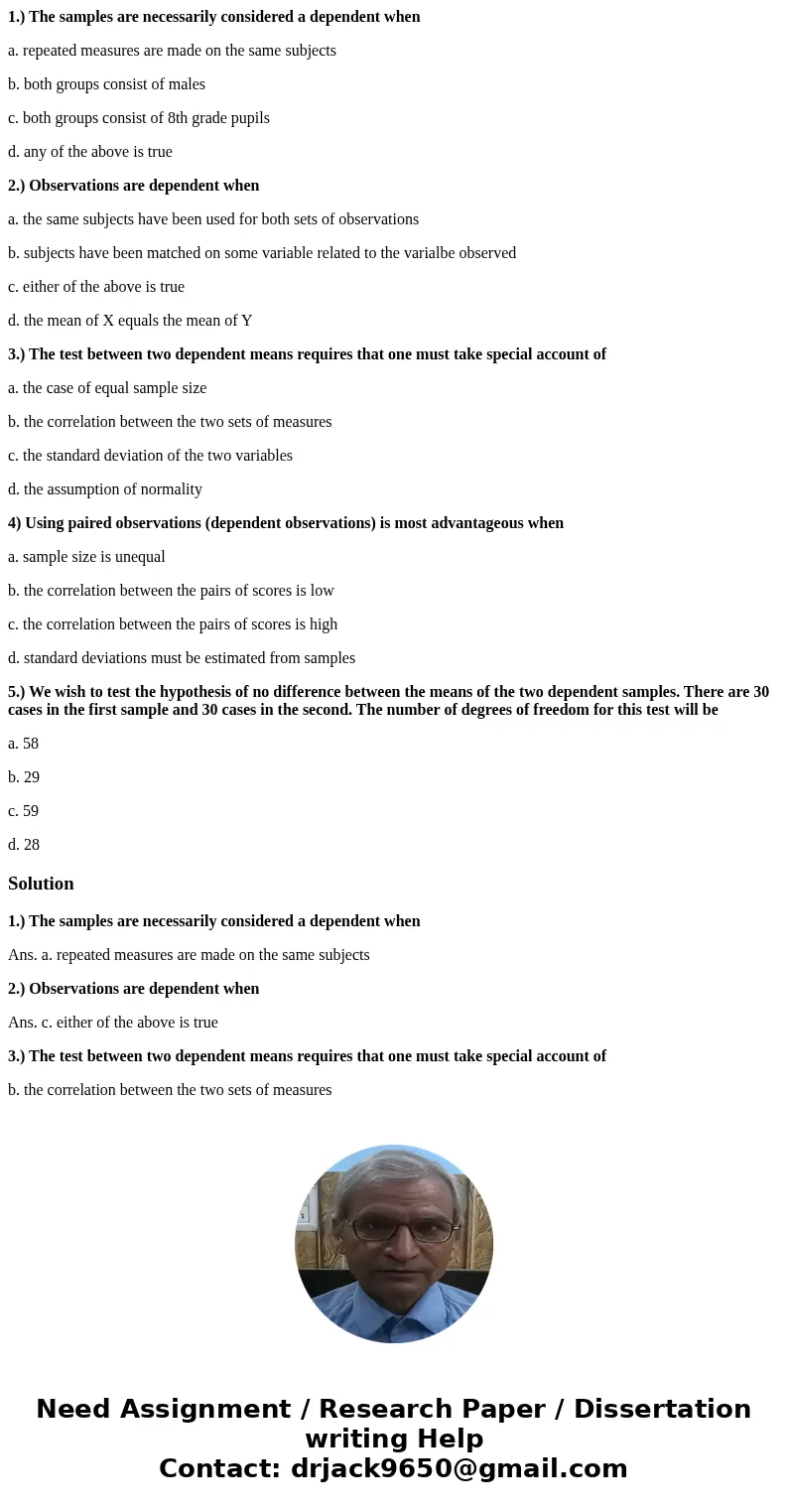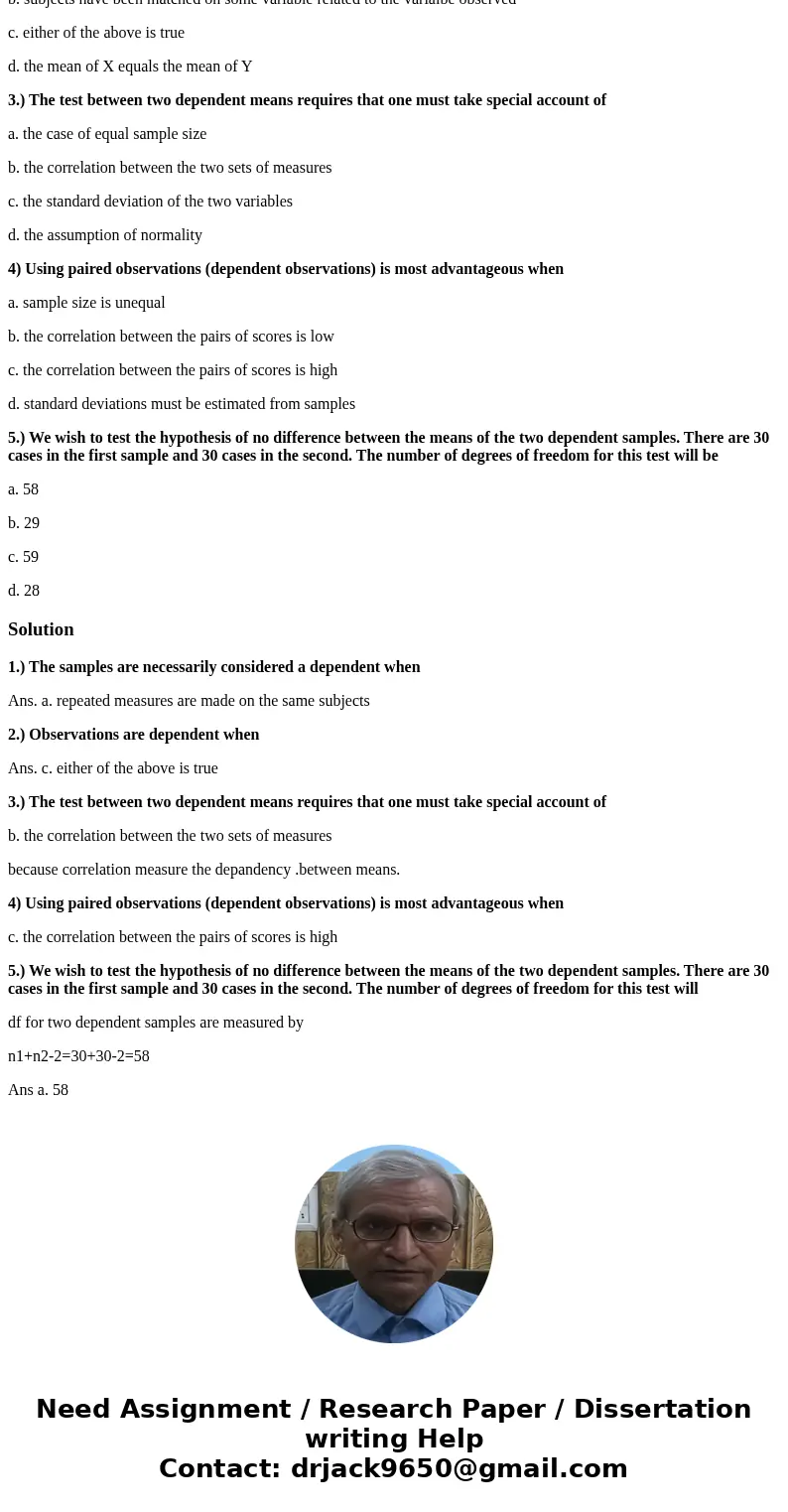1 The samples are necessarily considered a dependent when a
1.) The samples are necessarily considered a dependent when
a. repeated measures are made on the same subjects
b. both groups consist of males
c. both groups consist of 8th grade pupils
d. any of the above is true
2.) Observations are dependent when
a. the same subjects have been used for both sets of observations
b. subjects have been matched on some variable related to the varialbe observed
c. either of the above is true
d. the mean of X equals the mean of Y
3.) The test between two dependent means requires that one must take special account of
a. the case of equal sample size
b. the correlation between the two sets of measures
c. the standard deviation of the two variables
d. the assumption of normality
4) Using paired observations (dependent observations) is most advantageous when
a. sample size is unequal
b. the correlation between the pairs of scores is low
c. the correlation between the pairs of scores is high
d. standard deviations must be estimated from samples
5.) We wish to test the hypothesis of no difference between the means of the two dependent samples. There are 30 cases in the first sample and 30 cases in the second. The number of degrees of freedom for this test will be
a. 58
b. 29
c. 59
d. 28
Solution
1.) The samples are necessarily considered a dependent when
Ans. a. repeated measures are made on the same subjects
2.) Observations are dependent when
Ans. c. either of the above is true
3.) The test between two dependent means requires that one must take special account of
b. the correlation between the two sets of measures
because correlation measure the depandency .between means.
4) Using paired observations (dependent observations) is most advantageous when
c. the correlation between the pairs of scores is high
5.) We wish to test the hypothesis of no difference between the means of the two dependent samples. There are 30 cases in the first sample and 30 cases in the second. The number of degrees of freedom for this test will
df for two dependent samples are measured by
n1+n2-2=30+30-2=58
Ans a. 58


 Homework Sourse
Homework Sourse